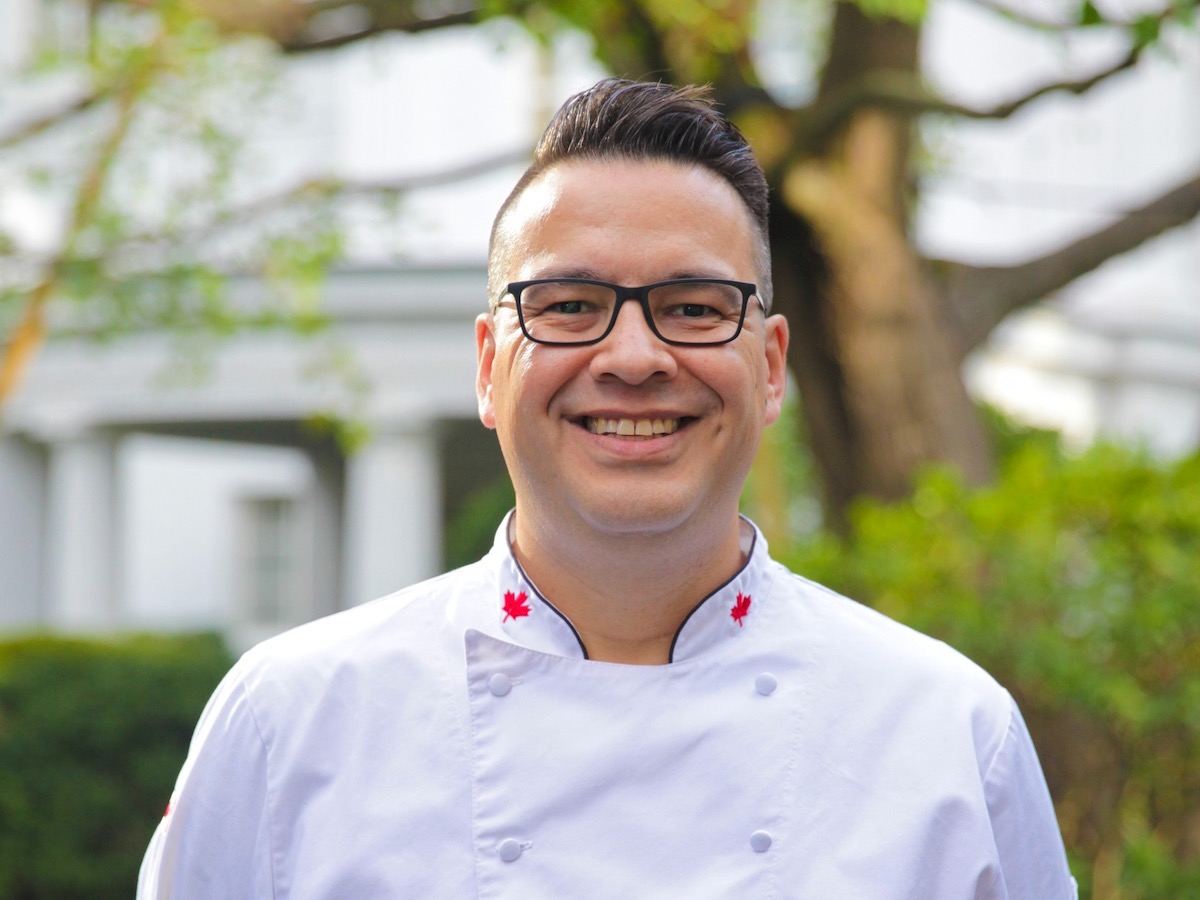Quentin Glabus isn’t just a chef. He’s a time traveller.
Since he graduated from NAIT more than two decades ago, he’s travelled the world. He’s cooked at Canadian consulates in New York, Rio de Janeiro, Beijing and Tokyo (to name a few). He’s even cooked at Disney World in Florida.
But, despite his jet-setting ways, he wants to take food back in time. When he speaks about cooking using “pre-colonial” ingredients, it’s as if he could jump through the Zoom screen from his home in Japan. The smile doesn’t leave his face.
What is pre-colonial cookery? It’s about dedication to using ingredients — and even cooking methods — that existed before settlers came to North America. It’s about cooking as Indigenous people did for centuries. No processed flours or sugars; no dairy products; no pork, no chicken, no beef.
“I don’t want to say it’s new. It’s not,” says Glabus. “It’s cultural, right? These are all ingredients that were introduced to North America.
“Because of my First Nations background, I always try to bring in Indigenous flavour and cuisine to everything I do.”
Since 2017, Glabus has been part of I-Collective, an international grouping of Indigenous chefs that promote traditional cookery. And, Glabus makes as many visits as he can with his mom at the Frog Lake First Nation, near Lloydminster, to soak up as much as he can about the history of Indigenous cuisine.
“I was blown away by it all,” says Glabus of his work with I-Collective. “And I started to think. How can I take something like a French dessert, say a crème brûlée, or a dessert like a pavlova, and make it pre-colonial?”
And I watch Glabus, with his child on his shoulder, work it out in his head, in real-time. His dream for a charred corn-husk pavlova, with corn custard, an acorn cake base, with either cedar or wild rice ice cream.
For the meringue, he’d need duck eggs. Maple syrup or honey would replace the sugar. The custard would need duck eggs and a walnut or almond milk. Acorn flour would be needed.
